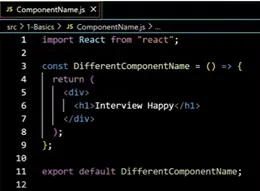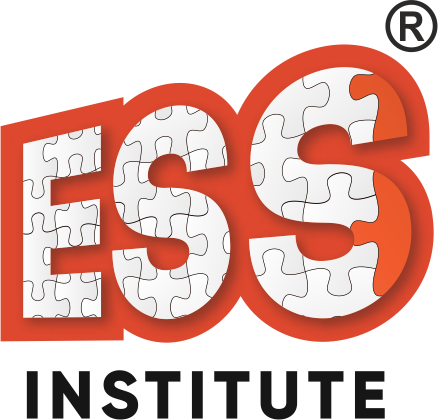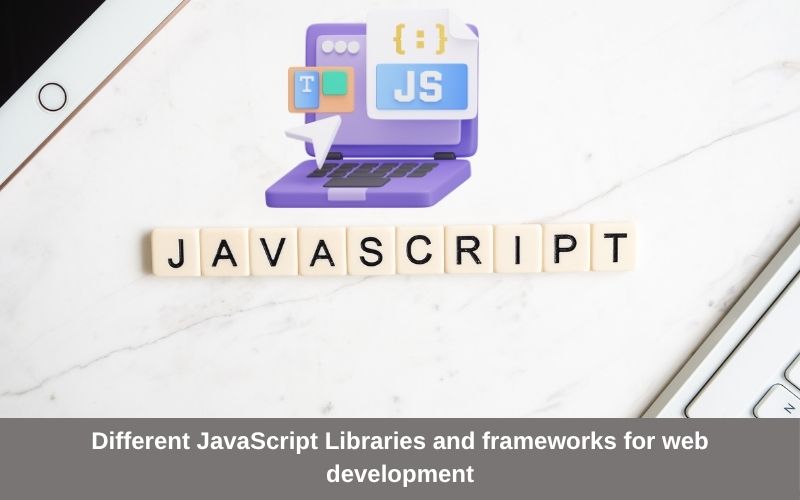Web development has become a skill of design and experience. What once needed days of hard coding now takes just hours with the right tools. Among those tools, JavaScript has become the backbone of frontend and backend development. But JavaScript alone is not enough for today’s complex websites and apps. That’s why developers now depend on JavaScript libraries and frameworks to speed up their work, reduce bugs, and build smooth user experiences.
In this article, we’ll look at the most widely used JavaScript libraries and frameworks in web development. We will also help you understand when to use which tool, and why choosing the right one can change your web development career. If you’re a beginner or want to switch careers, understanding these tools will give you a real edge.
What Are JavaScript Libraries and Frameworks?
A JavaScript library is a set of code written to perform common tasks. Instead of writing code from scratch, you reuse it. For example, if you want to add animations or fetch data from an API, a library like jQuery or Axios makes it easy.
A JavaScript framework provides a full structure. It helps you build your web app from start to finish. It controls the flow and forces you to follow certain design patterns.
In short:
- Libraries help you add features
- Frameworks help you build structure
Both have their uses. Most developers work with both types depending on their project needs.
Reactjs: The Go-To Library for UI Components
Reactjs is one of the most popular JavaScript libraries today. Created by Facebook, React allows you to build web apps by dividing the UI into small, reusable components. This means you can manage large apps without writing long pieces of code.

React is fast because it uses a virtual DOM. This means updates to the page happen quickly, and the user experience is smooth. It’s also backed by a strong community, so help and tutorials are easy to find.
React is ideal if you:
- Want fast rendering
- Plan to build single-page apps
- Work with modern tools like Redux or TypeScript
Reactjs is a key part of any JavaScript course, especially if you’re looking for job-ready skills.
Vuejs: The Simple and Flexible Framework
Vuejs is a progressive framework that helps you build user interfaces. It is easy to learn and works well with existing projects. Vue is loved for its clean syntax and low learning curve.
Like React, Vue uses components. But it also supports two-way data binding, like Angular. So, it mixes the best of both worlds.
Vue is great for:
- Small to mid-size apps
- Beginners in JavaScript
- Fast-paced development
If you’re searching for the best web development course online, pick one that includes Vue. It’s rising in demand.
jQuery: The Old Reliable
Before React and Vue came along, jQuery was the king. It simplified many things like DOM manipulation, event handling, and animations. It also fixed cross-browser issues, which were common years ago.
While not used much in large apps today, jQuery is still found in many existing websites. Knowing how to read and use jQuery is useful when working on older projects.
You should learn jQuery if:
- You work on legacy systems
- You want to build simple websites fast
- You need to understand older codebases
jQuery laid the foundation for many other JavaScript libraries we use today.
Nextjs: The React Framework for Fast Sites
Nextjs builds on React. It adds server-side rendering and static site generation, which helps improve performance and SEO. With Nextjs, your website loads faster and is easier to find on Google.
It’s perfect for building:
- Blogs and content-heavy websites
- E-commerce platforms
- Portfolio and business sites
Nextjs uses modern features like image optimization, routing, and API handling—all built into the framework.
This framework is often taught in advanced JavaScript courses and helps take your React skills to the next level.
Nodejs: JavaScript for the Backend

Nodejs allows you to run JavaScript outside of a browser. This means you can build your server-side logic, APIs, and backend systems with JavaScript. Node is fast, event-driven, and handles multiple connections with ease.
Nodejs is a runtime, not a framework. But many backend frameworks like Express run on Node.
Why use Node?
- You want a full JavaScript stack
- You need real-time apps (chat, streaming, etc.)
- You want fast APIs for mobile or web
Any solid web development institute in Delhi will include Nodejs in their curriculum. It’s a must-learn for full-stack developers.
Comparing the Tools: When to Use What
Here’s how they stack up:
| Tool | Type | Use Case |
| Reactjs | Library | Complex user interfaces |
| Vuejs | Framework | Quick development, easy learning |
| jQuery | Library | Simple features, legacy systems |
| Nextjs | Framework | SEO-friendly and high-performance |
| Nodejs | Runtime | Backend services and APIs |
Mixing tools is common. For example, use React with Node, or Vue with Firebase.
Why JavaScript Libraries Matter in Today’s Jobs
Web development is not just about HTML and CSS anymore. Companies want developers who can use modern tools. Hiring managers often look for skills in React, Node, and Vue.
Learning JavaScript libraries increases your chances of getting hired. You build apps faster, write cleaner code, and work better in teams.
Employers look for:
- Real project experience
- Understanding of components
- Ability to manage state and routes
- Knowledge of backend with Nodejs
That’s why investing time in learning these tools is worth it.
JavaScript in the Real World
Top websites like Facebook, Netflix, and Amazon use a mix of JavaScript tools. Even smaller businesses use them for blogs, dashboards, and e-commerce.
Having hands-on experience in these technologies opens doors to:
- Frontend developer jobs
- Backend API roles
- Full-stack opportunities
- Freelancing and remote work
A well-rounded JavaScript course will show you how to apply these skills in real life.
Where to Learn These Skills?
There are many online courses. But few offer personal attention and project work. That’s why in-person or hybrid models work better for many learners.
Look for the best web development course online that:
- Covers real projects
- Has expert faculty
- Offers placement support
Choose a course that teaches Reactjs, Vuejs, Nodejs, and even legacy tools like jQuery.
Why ESS Institute Is the Right Choice
If you’re looking for a strong start or a career shift, ESS Institute in Delhi is the perfect place. As a leading web development institute in Delhi, it offers both beginner and advanced-level programs. The training includes:
- Hands-on projects with Reactjs, Nodejs, and Vuejs
- Focus on practical skills over theory
- Mentoring by industry experts
- Real-time feedback and doubt-solving
- Help with resume building and job interviews
The course also includes lessons on JavaScript libraries, backend integration, and deployment techniques.
Whether you’re a student or working professional, the flexible batch timings and structured curriculum ensure learning fits your schedule.
Web development is evolving fast. If you want to build a successful career, you need to know more than just JavaScript. Understanding the right JavaScript libraries and frameworks gives you a huge advantage.
Tools like Reactjs, Vuejs, Nextjs, and Nodejs make development faster, smarter, and more scalable. They help you build real-world applications with clean code.
Learning these technologies with the right mentor, like those at ESS Institute, can help you turn knowledge into results.
So, whether you’re aiming for the next big job or building your startup—start with the right tools, the right course, and the right guide.

